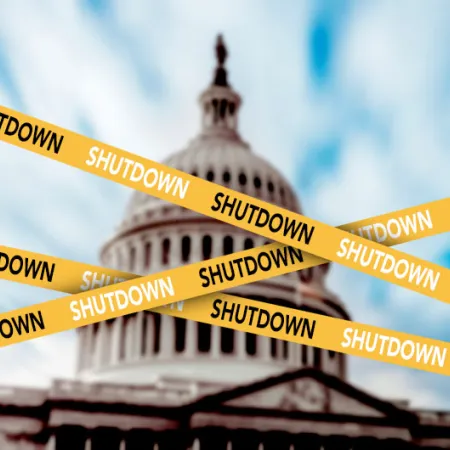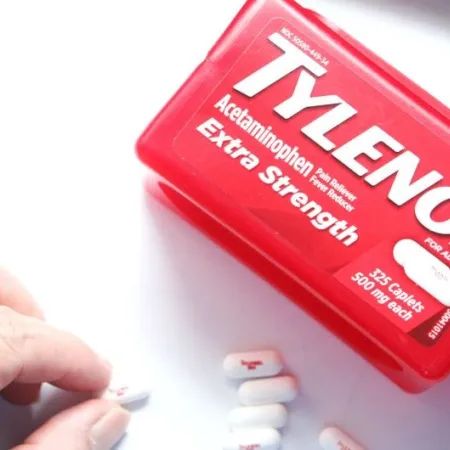The MAHA Commission Report bungles ‘gold-standard science’

C Malambo/peopleimages.com - stock.adobe.com.
On May 22, the Misinformation—ahem, MAHA—Commission released its preliminary report, outlining the threats it sees to American children's health. As other news outlets have reported, it’s riddled with technical errors that should give anyone pause about trusting its conclusions. It even mis-cites CSPI!
In February, President Donald Trump signed an executive order establishing the Make America Healthy Again Commission. The charge: “study the scope of the childhood chronic disease crisis” and its causes. Then, in a separate report, provide the President with recommendations on policy and strategy related to addressing those causes and ending the childhood chronic disease crisis.
The executive order emphasizes the importance of rigor, transparency, and gold-standard research.
It's hard to imagine anyone in the public health world who wouldn’t agree with those objectives. It’s clear that a focus on chronic illness is urgent. But it was also clear from the jump that the Commission would likely produce a skewed report.
That’s because the executive order left out known causes of chronic diseases like the use of tobacco and alcohol as well as high sodium and added sugar intake. Instead, the order calls for an assessment of “the threat that potential over-utilization of medication, certain food ingredients, certain chemicals, and certain other exposures pose to children.” And while those issues likely have some impact on chronic disease, they’re also likely far less important than the established causes (like tobacco). It’s a bit like trimming the hedges while the house is on fire.
Even more baffling, the Commission was given a deadline of 100 days to assess the problem and 180 days to develop the strategy. But rigorous, transparent, gold-standard research takes far longer than 100 days to complete on just a single topic, much less the potpourri of topics on the Commission’s agenda.
The MAHA Commission Report falls short of “gold-standard science”
As promised, the Report was published 100 days later. But the report fell short on transparency, rigor, and gold-standard research.
For one, the process of evaluating the evidence was not transparent. The MAHA Commission seemingly only had one meeting, which was not announced to the public in advance and was conducted behind closed doors. As a result, there was no opportunity for public input.
And there’s little in the report that was not covered in the executive order, making the Report’s conclusions seem predetermined. That’s the opposite of taking a rigorous look at the evidence. Was there any attempt to systematically review the available research to limit the risk of bias in the Commission’s conclusions? We don’t know because the Commission hasn’t pulled back the curtain on their work. (Tellingly, there’s nothing resembling a Methods section, a standard element of scientific reviews.)
But there were some new additions to the report. While the executive order never mentioned vaccines (unless you count a reference to autism), three pages of the 73-page report are dedicated to the topic, arguing that “there has been limited scientific inquiry into the links between vaccines and chronic disease, the impacts of vaccine injury, and conflicts of interest in the development of the vaccine schedule.” That’s perhaps not surprising, as Robert F. Kennedy, Jr., the Secretary of Health and Human Services, who was a driving force behind the report, has long taken anti-vax positions. But it’s also not true. Vaccine safety is continuously studied, and experts involved in setting the vaccine schedule follow strict guidelines to avoid conflicts of interest.
The MAHA Commission Report contains made-up citations
And then there was a twist. Last week, NOTUS, a nonprofit news website, reported that of the 522 citations in the report, seven didn't exist at all. What’s more, an analysis by the Washington Post found that at least 21 of the links used in some of those citations were broken.
In response, White House Press Secretary Karoline Leavitt dismissed the citation errors as “formatting issues.”
But they weren’t formatting issues. They were citations made up out of thin air. Or, more likely, they were invented by AI. Some references included “oaicite” attached to URLs, indicating that OpenAI—owner of ChatGPT—was used as a source of the references.
To call this sloppy writing “gold-standard science” is offensive to scientists everywhere.
Even an average undergraduate student knows better than to copy and paste references from ChatGPT or other AI software. That’s because those large-language models are known to “hallucinate” (that is, make up information that appears to make sense, even though it’s bogus).
Call us crazy, but we expect more from the U.S. government than we do from undergrads.
(Over the next few days, the administration tried to mop up the damage, releasing cleaned-up versions of the report. If you need to see the original, you’re in luck: We have it.)
CSPI is mis-referenced and misrepresented
Unfortunately, CSPI wasn’t spared from the MAHA Commission Report drama. On page 31, the report stated: “The 2025 Dietary Guidelines Advisory Committee (DGAC) under the Biden Administration opted not to issue recommendations limiting UPFs. Although they concluded that a diet higher in UPFs was associated with greater risk of obesity and/or being overweight, they graded the evidence as ‘limited.’189”
This statement is actually accurate. But there’s something amiss with reference 189, which appeared in the report as: “United States Department of Agriculture & Health and Human Services. (2025). Myths vs. Facts: Correcting Misinformation about the Dietary Guidelines. https://www.cspi.org/sites/default/files/2025-04/1.%20DGA%20Myths%20vs%20Facts_CSPI.pdf.”
That’s CSPI’s own fact sheet, with the right title and URL, though it’s misattributed to USDA and HHS. (As of June 4, the updated version of the report has not fixed this error.) And while the statement itself isn’t wrong, it’s under an inaccurate heading stating that the Dietary Guidelines for Americans “Do not explicitly address UPFs.” (That’s short for “ultra-processed foods.”)
But the Dietary Guidelines Advisory Committee did address UPFs. They completed a full review of the evidence, but, as that very same CSPI fact sheet notes, found that “the evidence was not consistent enough to reach strong conclusions, so the [Dietary Guidelines Advisory Committee] determined it would be premature to recommend categorically limiting UPFs... That said, the DGA already does promote minimally processed foods through its recommendations to limit saturated fat, added sugar, sodium, processed meat, and sugar-sweetened beverages.”
Maybe next time they cite us, they can attribute our work appropriately and read what we wrote.
The idea that the MAHA Commission would envelop themselves in the shroud of scientific excellence while producing a report that relies heavily on AI is just shockingly hypocritical.
The American people deserve better from their government.
Have tips for CSPI’s Misinformation Research Project?
Email us at misinformation@cspinet.org.

Stirring the Pot
Join the fight for safer, healthier food
Sign up to receive action alerts and opportunities to support our work in Stirring the Pot, our monthly newsletter roundup.
How CSPI is fighting threats to public health
What the science says about Tylenol and autism
Fact vs. Fiction

Will food safety workers be fired or lose pay during the government shutdown?
Government Accountability

Nutrition and food safety at risk amid government shutdown
Government Accountability

Trump distorts facts on autism, Tylenol, and vaccines, scientists say
Government Accountability

Under Trump, FDA seeks to abandon expert reviews of new drugs
Government Accountability


